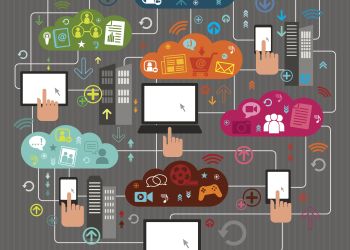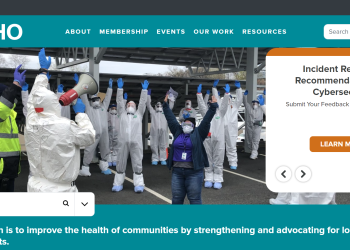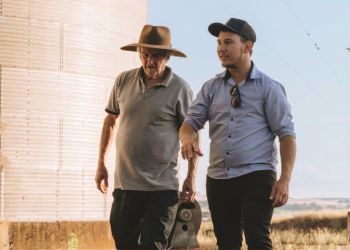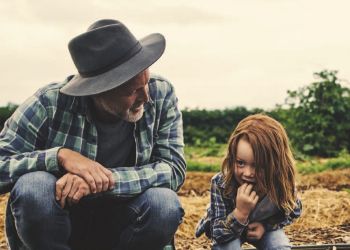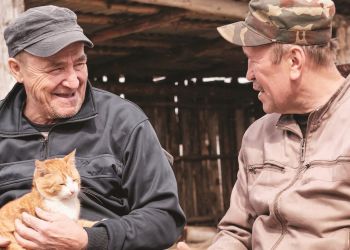 By Meredith Williams, NACCHO Health and Disability Fellow
By Meredith Williams, NACCHO Health and Disability Fellow
This fall, the Cerebral Palsy Foundation launched its Just Say Hi campaign to address the discomfort and hesitation many people feel when first attempting to communicate with people who have disabilities. Many local health departments face a similar uncertainty when attempting to communicate with people who have disabilities, which can be a major barrier to preparing for, responding to, and recovering from emergencies and disasters. But the celebrities and public figures featured in the campaign emphasize that communicating with people who have disabilities can be easier than it seems. Whether you watch a campaign video or ask Siri how to start a conversation with someone who has a disability, you’ll receive the same advice: “It’s easy. Just say ‘Hi.’”
Most Emergency Communications Remain Inaccessible
People with disabilities face serious health inequities and are more likely to face adverse outcomes during and after an emergency. Twenty percent of the U.S. population currently has a disability, but almost everyone will experience a disability at some point in their lifetimes. [1] Some people have disabilities that affect their ability to communicate, including hearing, seeing, speaking, reading, writing, or understanding.
Title II of the Americans with Disabilities Act requires state and local governments ensure that “whatever is written or spoken must be as clear and understandable to people with disabilities as it is for people who do not have disabilities.” [2] Nonetheless, the National Council on Disability reports that emergency communications remain largely inaccessible to people with disabilities. [3] Emergency communications are a critical part of saving lives, and inaccessible communication practices threaten to leave many people with disabilities behind. For example, press conferences and television announcements may not include an American Sign Language interpreter, television and video captioning is often inaccurate, and telephone systems, such as 911, may not able to receive text communications from people who are deaf or hard of hearing.
Recognizing the importance of accessible communication, the White House announced its commitment to making this year’s State of the Union address accessible to everyone for the first time. This includes providing accurate real-time captioning for all live broadcasts of the address, communication access real-time translation (CART) services for people attending the watch party at the White House, and transcripts of the address after it airs. The White House is also taking steps to make sure that people who use screen readers and speech recognition software can access its website and social media videos.
What Can Local Health Departments Do?
Making sure that communications are accessible to the whole community not only saves lives during emergencies and disasters, but helps people with disabilities learn about your health department, contact you, and use your services. Accessible communication is a vital part of including and engaging people with disabilities in everything your health department does. The following suggestions can help your health department improve communication accessibility:
- Get involved. Partner with organizations that represent and serve people with disabilities in your community and get involved with these organizations’ community events, meetings, and projects. Invite these organizations to become actively involved in assessing the accessibility of your communications over the long-term. Include people with disabilities and disability organizations in your emergency drills and on your advisory boards, planning committees, and evaluation teams.
- Ask people with disabilities to lead or participate in staff training. People with disabilities are diverse and know their individual needs and preferences best. Use training tools like the ADA Hospitality & Disability: At Your Service Video that feature people with disabilities speaking about their own communication needs.
- Practice multimodal communication. Provide at least one form of communication for each type of communication disability to ensure that everyone can access information, particularly during emergencies. Use alternative formats for written communications, including printed documents with large text, electronic documents, and audio recordings. Learn about sign language interpreting and video remote interpreting (VRI) services for in-person communication. Become comfortable using teletypewriters (TTYs) or computers with TTY capabilities, telephone relay services, and video interpreting services (VIS) for telephone communication. Remember, communicating with people who are deaf, are hard of hearing, or have speech disabilities doesn’t have to be complicated. Simple solutions such as writing communication on paper, smart phones, or computers can be very effective. You can follow the White House’s lead by providing CART services, printed transcripts, and accessible websites. Visit ADA Best Practices Toolkit for State and Local Governments—Chapter 5: Website Accessibility Under Title II of the ADA to learn more.
- Find out what resources are available in your community. Be prepared to communicate effectively by finding out who provides interpretation, transcription, and other communication services in your community. The Registry of Interpreters for the Deaf and the National Court Reporters Association Online Sourcebook maintain searchable online directories of certified professionals.
- If you’re not sure what to do—ask. Not everyone with a disability has difficulty communicating, and not all modes of communication work for everyone with a certain type of disability. The best way to find out how to communicate effectively with each individual you encounter is to ask. Make a habit of asking people if they need assistance, and if so, what type of assistance they need, rather than asking if they have a disability. The choice to self-identify as a person who has a disability is up to each individual and can feel threatening to those who have encountered stigma and discrimination in the past. Practice using person-first language and interacting with people with disabilities as capable adults. If you don’t know what to do or which terms to use, just ask! It’s easy—the conversation starts when you “Just Say Hi.”
Additional resources:
- ADA Best Practices Tool Kit for State and Local Governments—Chapter 3: General Effective Communication Requirements Under Title II of the ADA
- Title II Checklist for General Effective Communication
- Effective Communication for Health Care Providers: A Guide to Caring for People with Disabilities
- Removing Barriers: Tips and Strategies to Promote Accessible Communication
- Effective Communications for People with Disabilities: Before, During, and After Emergencies
- Show Me: A Communication Tool for Emergency Shelters
- Just in Time Training: Disability Awareness for Responders
- Emergency Response for People Who Have Access and Functional Needs: A Guide for First Responders
References
- Centers for Disease Control and Prevention. New features added to Disability and Health Data System (DHDS). National Center on Birth Defects and Developmental Disabilities. http://www.cdc.gov/ncbddd/disabilityandhealth/features/dhds.html. Published April 15, 2014. Accessed December 5, 2015.
- US Department of Justice. ADA Best Practices Tool Kit for State and Local Governments—Chapter 3: General Effective Communication Requirements Under Title II of the ADA. Americans with Disabilities Act. http://www.ada.gov/pcatoolkit/chap3toolkit.htm. Published February 27, 2007. Accessed January 6, 2016.
- National Council on Disability. Effective Communications for People with Disabilities: Before, During, and After Emergencies. National Council on Disability. http://www.ncd.gov/publications/2014/05272014. Published May 27, 2014. Accessed January 6, 2016.
